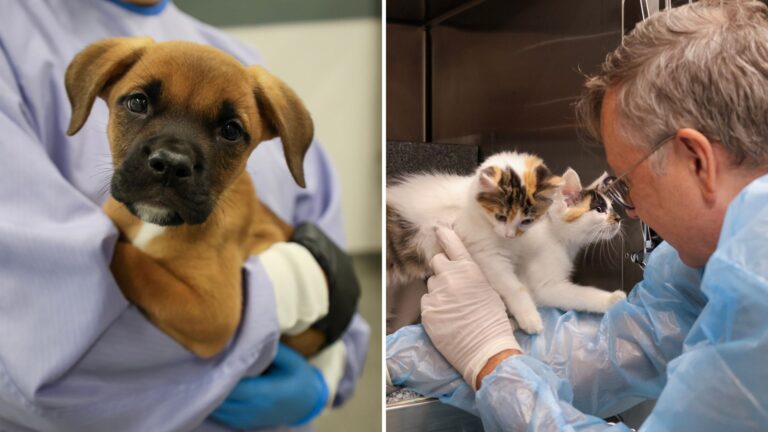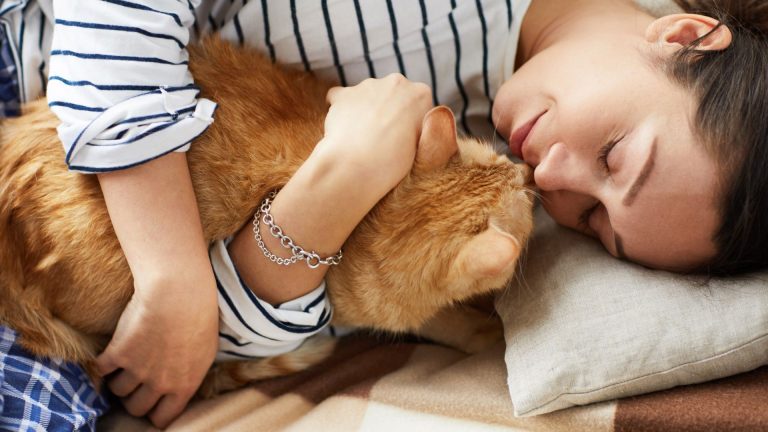How Long To Keep Cat Confined After Spay? Read And Find Out!
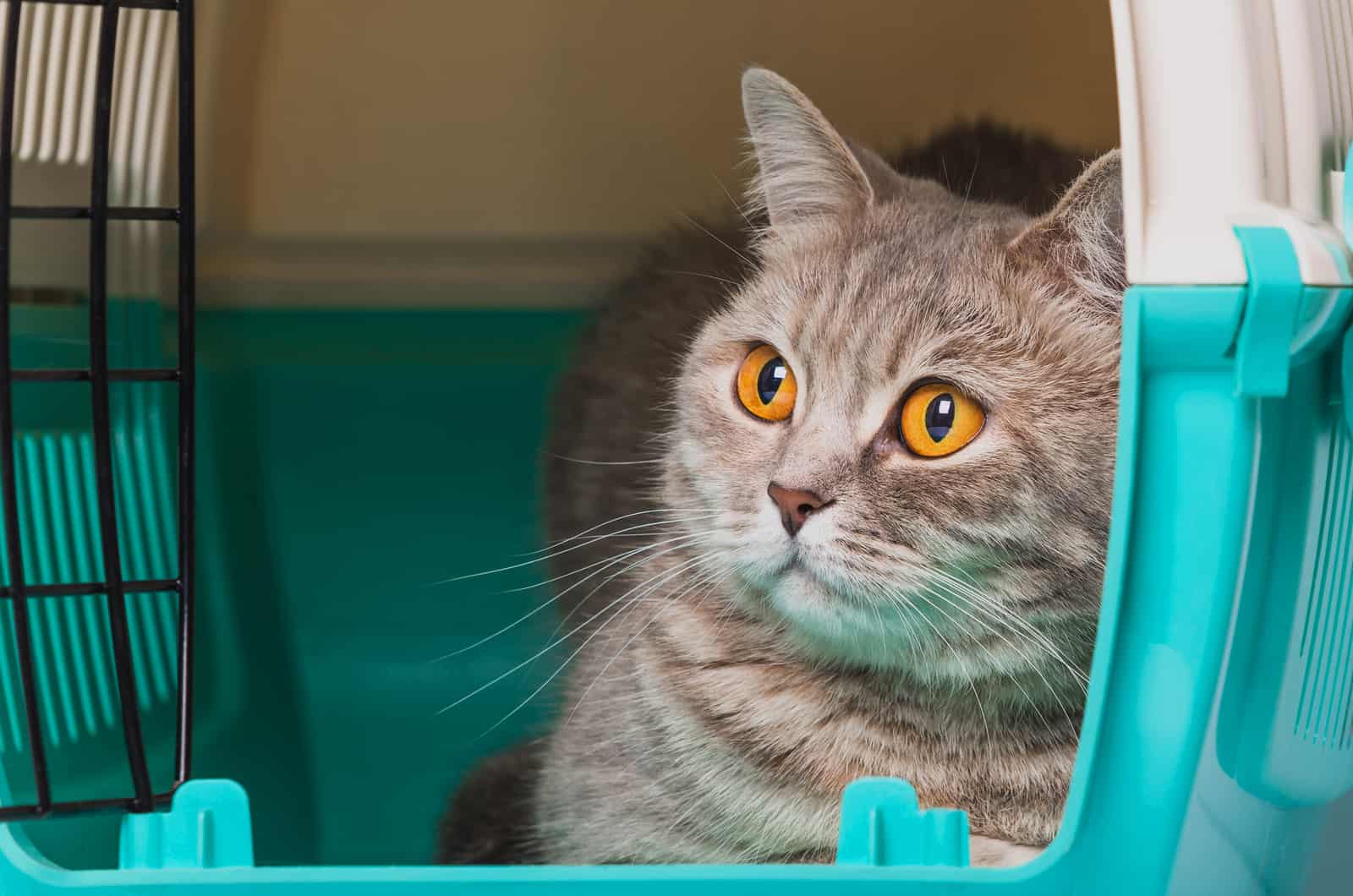
Many cat owners usually choose to spay or neuter their cats for many reasons.
Female cats are usually spayed in order to prevent unwanted pregnancies or serious diseases, such as breast tumors or womb infections, as well as to calm the behavior in both female and male cats, especially during the mating season.
However, if you decide to spay or neuter your cat, there are certain things that need to be taken care of, especially after the surgery.
The surgery isn’t that complicated and it’s not painful for your feline due to the anesthesia, but the healing process can be challenging for both of you.
If you’re thinking about having your cat spayed, read the following text and find out how long to keep a cat confined after spay, the potential problems following the surgery, and how to take proper care of your furry friend until it fully recovers!
How Long To Keep Cat Confined After Spay/Neuter?
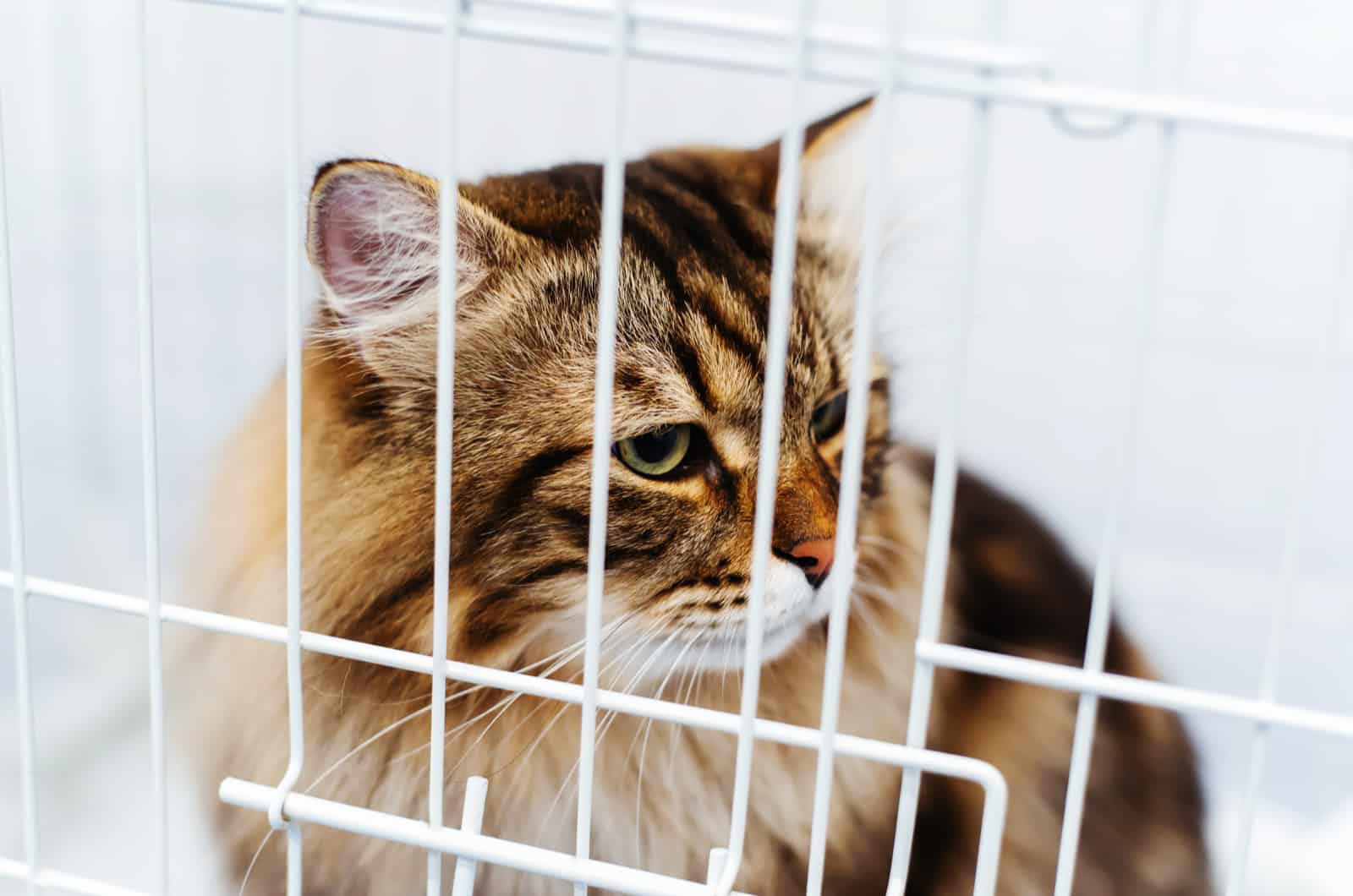
It’s very important to keep your cat confined after spay until it recovers completely. If you’re questioning how long to keep cat confined after spay surgery, the answer is at least 10 to 14 days.
By keeping your cat confined after the surgery, you’ll easily hasten the healing process and you’ll be able to prevent infections as well as other serious complications.
It’s important to provide your cat with a quiet and safe environment that will allow it to rest.
Many cat owners feel sorry for cats, thinking they’re in pain.
However, it’s better to choose this surgery sooner, if you don’t want your cat to have kittens and if you want to reduce the possibility of serious diseases later on.
When being spayed or neutered, cats are under general anesthesia and they cannot feel anything.
However, the post-operative period may be painful for them, but with proper care, your feline friend will recover sooner than you think.
Do You Have To Keep Your Cat Confined After Spaying/Neutering?
It’s recommended to keep your cat confined after spaying/neutering in order to prevent possible infections or other complications.
Moreover, you’ll be able to monitor them and their healing progress more carefully.
Moreover, after the surgery cats are a bit disoriented and lethargic due to the anesthetics, therefore keeping them indoors may prevent them from hitting or falling off something.
Besides that, it’s important to keep your feline indoors in order to prevent them from moving around as usual because spaying is abdominal surgery. There is a risk that a sudden or wrong movement can result in loosening or even breaking the stitches.
If your cat is moving freely outside of the house, the chances of contracting various infections may increase, as well as tearing the bandages which may be very uncomfortable for your feline and may even impact the recovery process.
However, neutering is a surgery that consists of the removal of a male cat’s testicles. The vet does this by making a small cut on the scrotum in order to remove the testicles.
Unlike female cats, males don’t have sutures, therefore it’s completely okay for them to go outside after a couple of days.
Remember that keeping your cat indoors during the recovery period decreases the risks of these unwanted situations occurring.
What Are The Benefits Of Spaying A Cat?
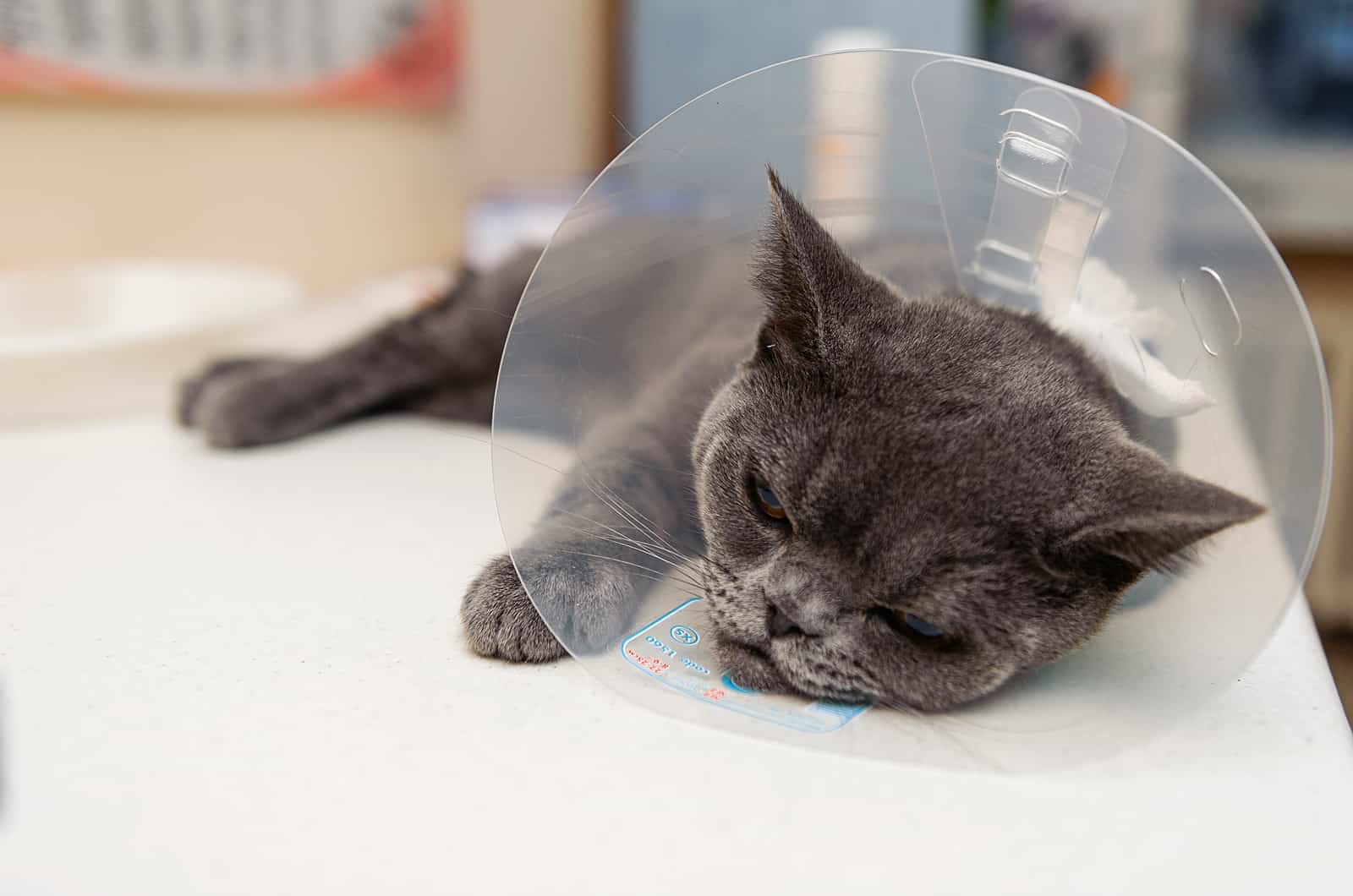
There are many benefits of spaying a cat that will make both your and your cat’s life easier.
🐾 No Heat Cycles – so after spaying your cat, you don’t have to worry about heat cycles every time they occur. Besides that, your cat’s behavior may improve because they won’t be so demanding.
🐾 No Pregnancies – spaying is a surgical procedure that involves the removal of a cat’s ovaries and reproductive organs making her unable to get pregnant again. So, if you don’t want your cat to be pregnant, it is advised that you spay her on time.
🐾 Prevention Of Serious Diseases – cats are prone to serious health diseases such as breast tumors, womb infections, uterine tumors, etc. These diseases can be very dangerous for your feline. However, spayed cats have no risks of developing these diseases.
Possible Post-Surgery Problems!
It’s highly important to keep your cat confined after spaying or neutering in order to monitor her closely and to speed up the cat’s recovery without complications.
However, even indoor cats have enough space to move around, thus increasing the risks of possible complications.
So, let’s see what are the possible post-surgery problems so that you can react fast if you notice them!
Loosening The Stitches
If your cat has enough space to run and jump around the house, she’ll try to take advantage of this and that’s no good for a cat in such a condition. Any sudden or wrong movement may cause loosening or even breaking of the stitches.
This may result in opening of the wound which can become prone to various infections.
Another thing is that it may result in bleeding from the wound. If you notice that, you should take your cat to the vet immediately because this may prolong the cat’s recovery time.
Wound Injuries
Running and jumping may also result in a cat inadvertently hitting something that may lead to the opening of a cat’s incision.
Again, if that happens, it’s essential to take your cat to the vet so that they can take proper care of the wound and incision area. In addition, you should check your cat’s incision site every day to exclude possible infection risks.
That’s another reason why it is important to secure and limit the space where a cat can move in order to minimize the risks of injuries.
Loosening The Bandage
Make sure that your cat’s bandages are always dry because they allow the surgical site to heal faster.
A cat may even rub up against something and loosen its bandage or even break it completely.
If this happens, you should visit your vet to clean the wound and replace the bandage immediately to minimize the chances of infection or other possible complications.
Cone Accidents
A cone is used to prevent the cat from licking and scratching the wound as excessively doing this can prolong recovery time and cause the cat to injure itself.
However, if a cat in that condition has a lot of space to move around the cone may get stuck somewhere.
This may happen often because cones impact the cat’s field of vision, therefore, it’s very important to secure and limit a cat’s place during the recovery process.
Physical Effort
Although cats aren’t usually that active after the spaying surgery, there are exceptions. During the healing process, cats need to rest until they recover completely.
However, cats that are active after the surgery, may later become lethargic and weak, prolonging the recovery period. Besides that, the more active they are, the higher the risk of injuries.
Precaution Tips!

However, almost every problem has a proper solution. Find out what these are by reading on to determine what you can do for your cat after the surgery.
Immediately After Operation
The first day after a cat’s spay is very important. On the first day of surgery, your cat may still feel dizzy because of the anesthetic, so make sure it doesn’t move a lot, to prevent falling or knocking against something.
You should provide a perfect place for your cat which will be small, quiet, and most importantly, secured. Some suitable places include:
🐾 Bathroom – a small bathroom can be a good place for a cat’s recovery because it’s isolated from loud noises and crowds.
However, it’s still not the safest place for your feline because of the high surfaces where your cat may try to jump and may lead to an injury.
If you’re going to put your kitty in a small bathroom, make sure that you secure the area as much as you can.
🐾 Bedroom – a bedroom can also be a good choice if you don’t have any other option.
However, as with bathrooms, you need to secure the area and adapt it to your cat’s current needs. Make sure you remove all the objects that may harm your feline.
🐾 Pet Carrier – a pet carrier would be the best option for a place for a cat to recover. It’s a small area that is completely safe for your feline because it contains no objects that may harm her.
It’s the best place, especially for the first few days after the surgery. However, you need to make sure that the carrier is big enough to fit the cat’s bed, food and water bowl, and a litter box.
🐾 Veterinary Station – if you don’t have a proper safe place for your cat to stay after the surgery, you can always ask your veterinarian to keep your cat for a day or two after the surgery.
This can be really helpful, especially if you don’t have a small room in your home, or if you cannot monitor your cat closely during this essential period.
What Should You Do After The First Two Days?
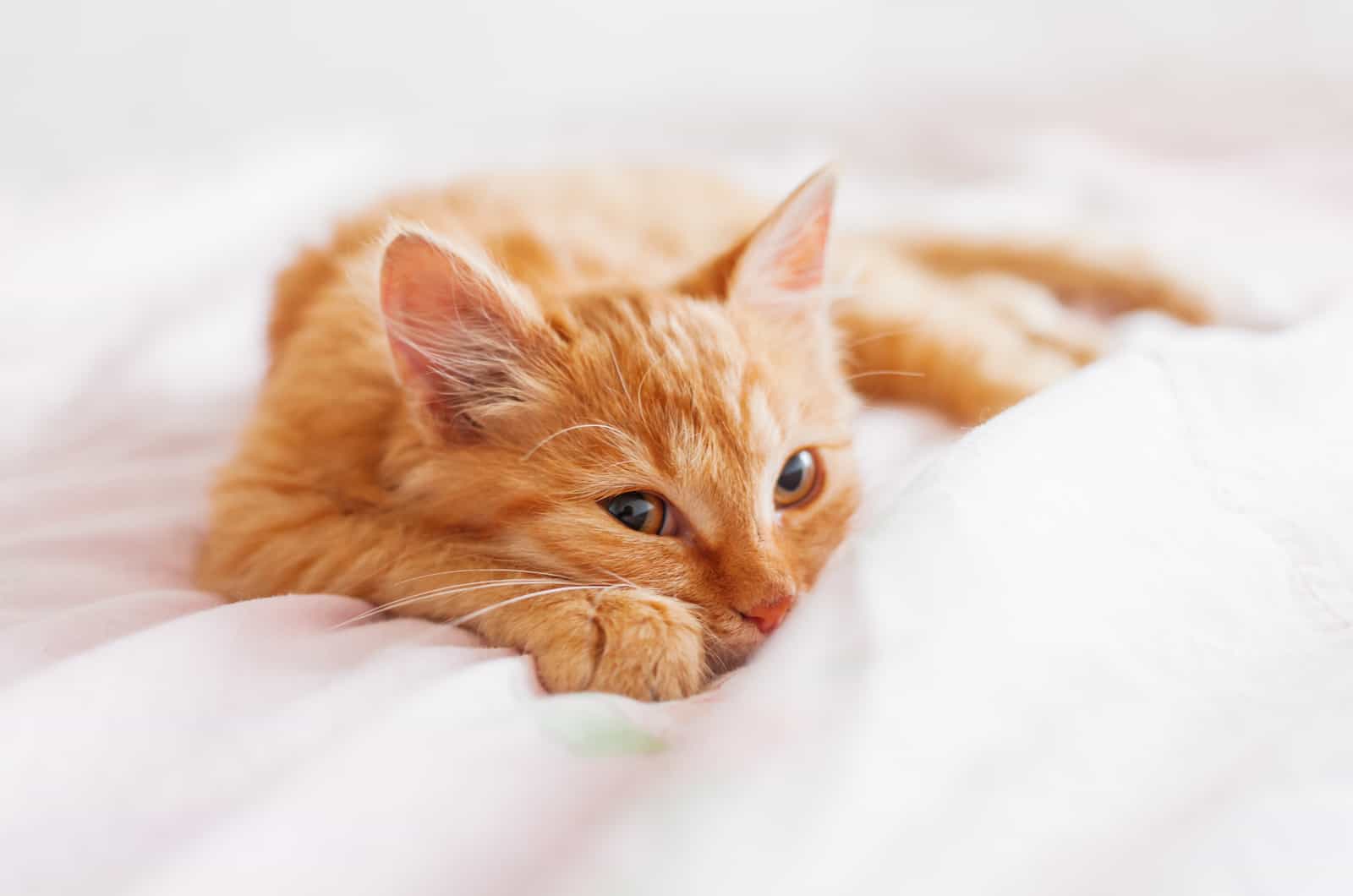
Although the first two days are crucial in the cat’s recovery, you should monitor your cat until it fully recovers. Sometimes, that may mean that you need to secure the place in order to avoid possible injuries or similar complications.
So, let’s see to what should you pay attention the most:
🐾 Calm environment – after the anesthetic eases up, your cat may start to feel pain and discomfort.
If you notice weird and sudden changes in your cat’s behavior, such as excessive meowing, it may mean that she’s in pain. In this case, you should consult with your vet on giving your cat pain medications.
Besides that, make sure that there are no stressors in the cat’s environment. Provide her with a calm and quiet place to separate it from other pets or people.
🐾 No running and jumping – although cats are rarely active during their recovery, try to prevent your cat from running and jumping.
It’s important to prevent this behavior because it can cause their stitches to come loose or they may injure themselves, and you certainly don’t want more complications.
🐾 Separate your cat from other pets – if you keep all of your pets together, they may not understand that something’s wrong with your cat which can lead them to an unintentional injury during play or similar.
Therefore, it’s very important to separate your cat from other pets to allow for complete healing.
🐾 Avoid play-time – just as your cat shouldn’t be overly active during the healing process, you shouldn’t play with her often because this may result in injuries or similar.
Be patient, monitor your cat, and soon enough you two will be able to enjoy your play-time again.
While keeping your cat confined, make sure that it always has a clean litter box, as well as food and water.
Lack of appetite is normal within the first two days, however, if it continues, then you should consult with your vet.
Also, be prepared for your cat to urinate or poop outside the litter box due to dizziness or weakness.
Make sure that you keep your cat confined until fully recovered, that is, until the wound heals completely. If you’re not sure about something, it’s better to check with your vet rather than decide what to do on your own.
Proper Post-Operative Care For A Spayed/Neutered Cat
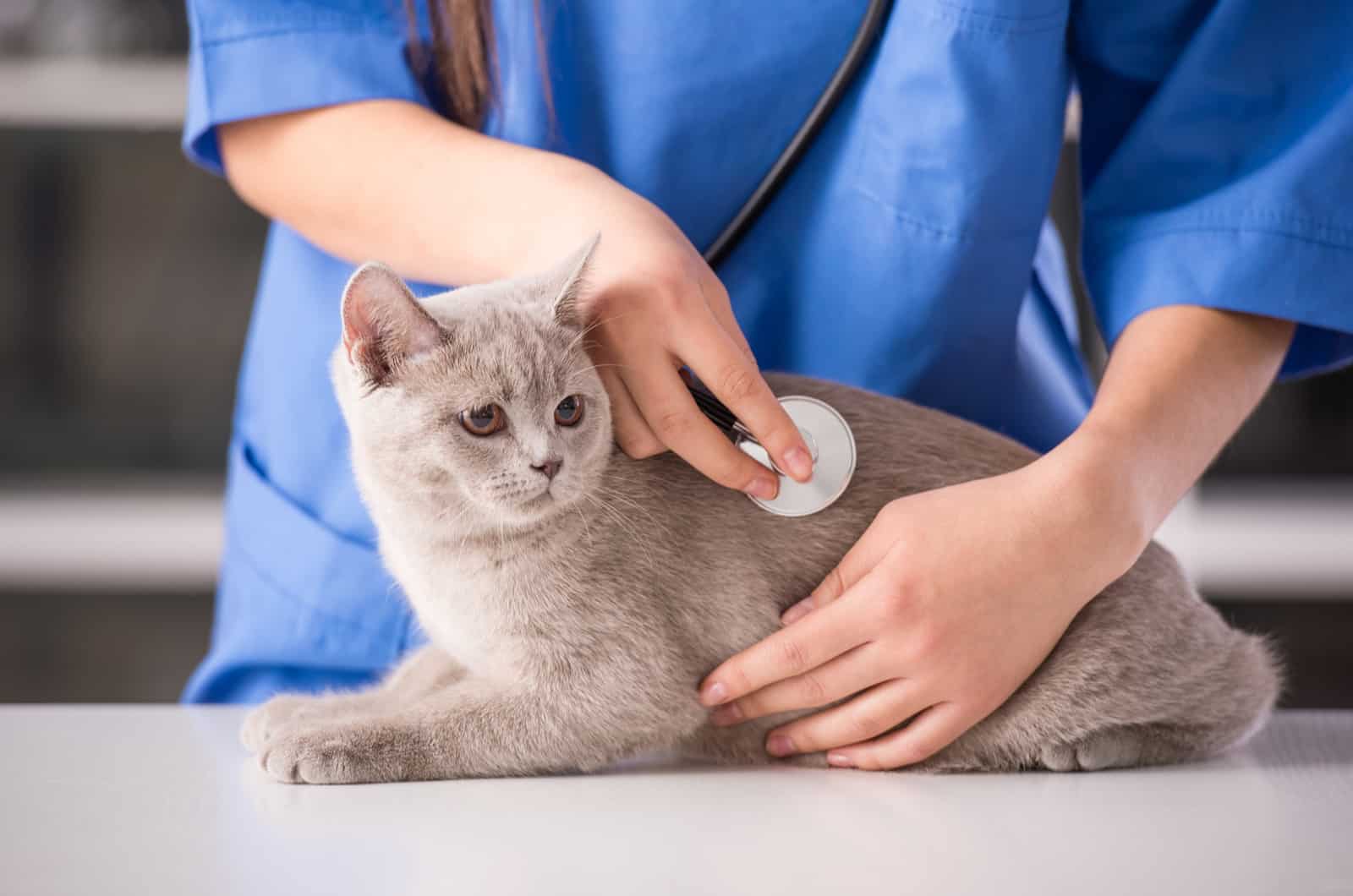
So, how long to keep cat confined after spay depends on the cat, but usually, it’s recommended to keep it confined for 10 to 14 days, that is, until it fully recovers.
But, in order for your cat to recover completely, proper aftercare is needed, so let’s see what this means.
Regular Vet-Checks
Regular vet-checks are very important for your cat’s recovery, and you should visit your vet regularly to be sure of the progress.
In addition, you should follow up on any advice that your vet gives you, as well as pay attention to giving your cat medications properly.
Proper Medications
If your vet gives your cat medications, it’s crucial that you stick to the schedule and to give your cat the proper dose at the right time of the day.
If you notice side effects from those specific medications, you’re obliged to inform your vet about them, so that they can react by changing the medications or similar.
Rest
Rest is highly important for your cat’s healing process. So, make sure that your cat is in a calm and safe place and prevent them from running or jumping which may lead to injuries.
Another important thing for the cat’s progress is to separate her from other pets, and also make sure you don’t have a lot of unknown people around because that can be stressful for your cat.
All in all, just make sure that your feline is comfortable in that environment and stick to her routine so that she can be calm and satisfied.
Wound Inspection
You should check your cat’s wound at least once a day. If you notice swelling, redness, or even bleeding, you should inform your vet as soon as possible.
It’s highly important to notice these symptoms and to take proper care of the cat’s wound in order to prevent infection as that will only worsen the problem.
E-Collar
An Elizabethan collar or cone can be really helpful for cats after the surgery.
It’s completely normal for your cat to be uncomfortable wearing the cone, but it’s also important because it prevents the cat from licking and scratching the wound, which may lead to injuries, opening the wound, breaking the stitches, or even infections.
Because of that, a cone or e-collar is recommended to be worn during the whole recovery process.
Can I Hold My Cat After The Surgery?
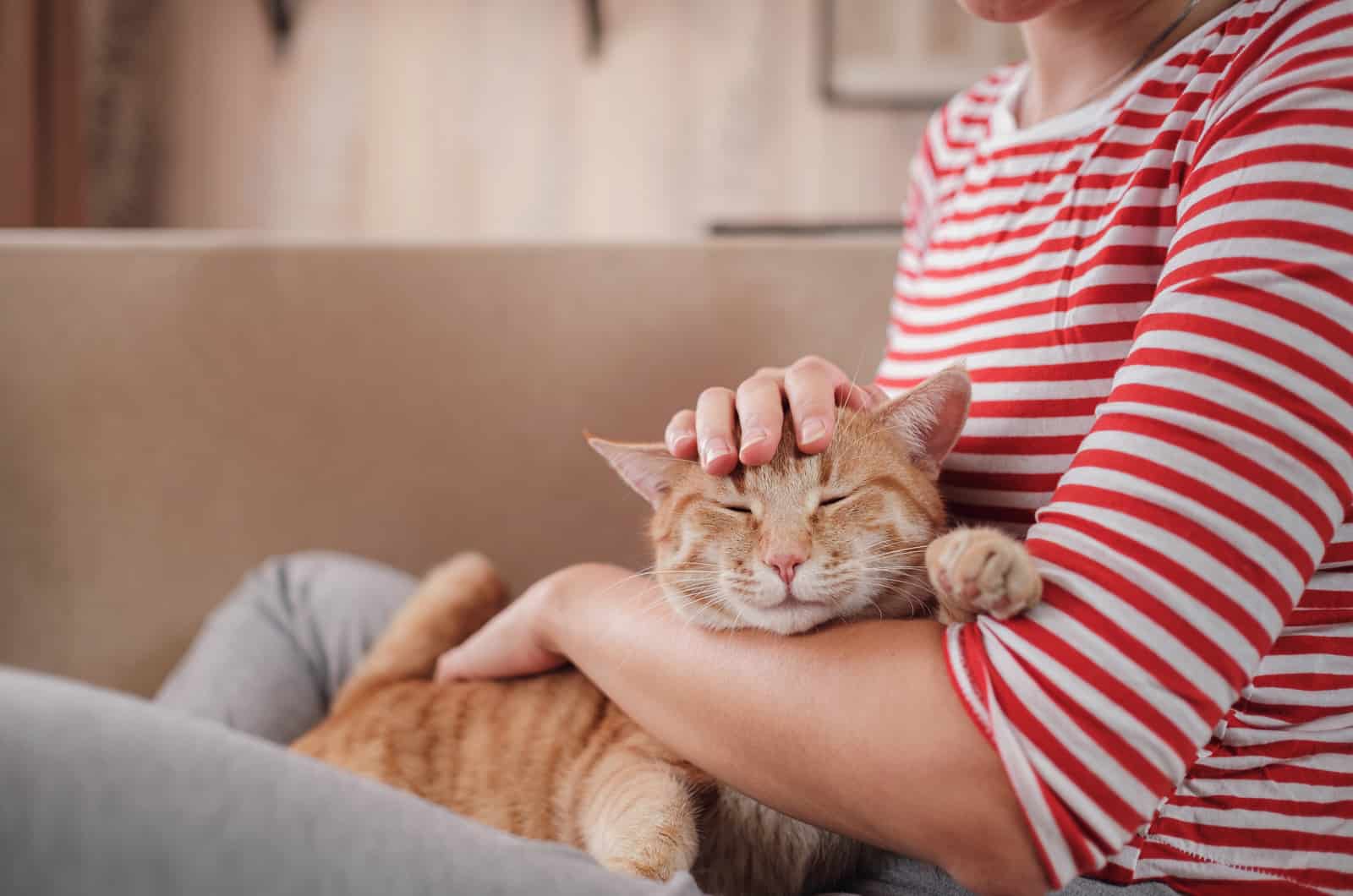
It would be best if you avoid lifting and holding your kitty after the surgery, especially during the first two days.
You can do it only if necessary, such as if your cat can’t walk due to the anesthetic. Holding and lifting may result in reopening the wound or breaking the stitches.
So, make sure you monitor your cat for the first two days carefully but avoid holding it.
How To Pick Up A Cat After Surgery?
You must avoid lifting or holding your cat after the surgery unless it’s really necessary. For example, if your cat is still dizzy and unstable and if she cannot get to the cat’s bed or to the food or water bowl, it’s okay to help her.
But how to do it properly, so that you wouldn’t injure her? Let’s see!
First, hold your cat’s back legs with one hand, then use your other hand to hold under the chest.
When you do that, lift your cat carefully and make sure that she’s well supported and not stretched in order to reduce the risk of loosening the stitches or reopening the wound.
FAQ
Can I Leave My Cat Alone After Being Spayed/Neutered?
You shouldn’t leave your kitty alone in the first two days after surgery because it’s the most crucial period.
You should be able to monitor your cat carefully and be able to recognize any side effects. You need to be sure that your cat’s urinating properly.
After that period it’s okay to leave your cat alone, but not for too long.
You still need to monitor the changes in your cat’s behavior, as well as to give her the prescribed medications, and inspect the wound often to see if there are any changes that could lead to an infection.
Can I Let My Cat Walk Around After Being Spayed/Neutered?
Your cat shouldn’t walk around the house for at least 48 hours after the surgery, mostly because she’s unstable due to anesthesia and may easily injure herself. žAfter that period, depending on the cat, some may be weak while others may be active.
The only important thing is to monitor them closely while they’re walking so that you can prevent them from injuring themselves, and also prevent them from running or jumping around so that they wouldn’t break the stitches or bandages.
On the contrary, male cats can also be dizzy and disoriented in the first two days, however, later they’re completely okay to move around.
Can My Cat Jump On The Bed After Being Spayed?
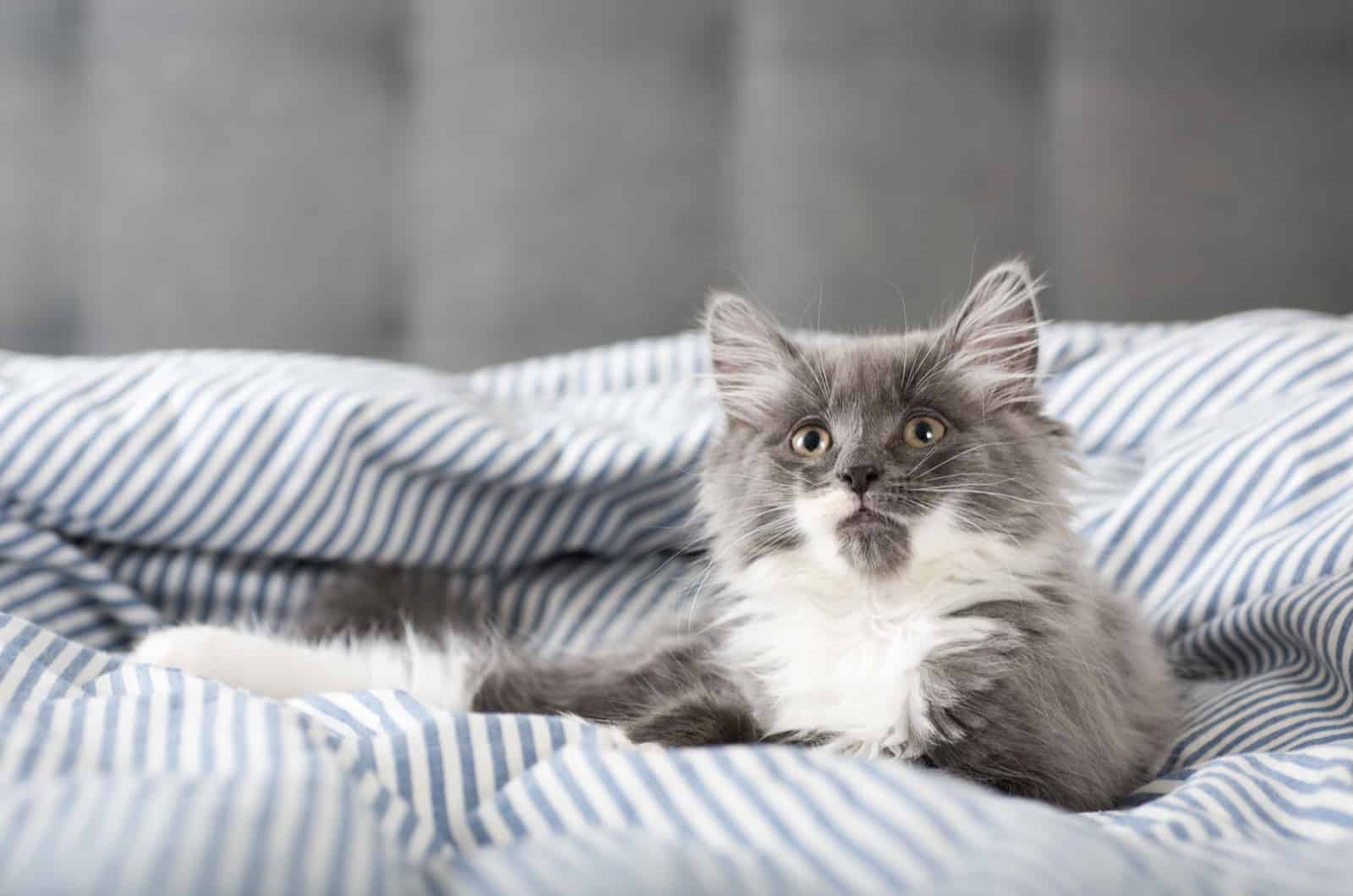
It’s not recommended for a cat to jump on the bed or anywhere around the house during the recovery process because it may get injured and that may also prolong the healing process.
So, it would be best if you limit your cat’s movement and prevent it from jumping.
What Should I Do If My Cat Starts Bleeding After Being Spayed?
Minor bleeding such as spotting is completely normal after surgery, however, if you notice persistent bleeding, you can use a towel to suppress the blood and go to the vet immediately.
When Can Female Cats Go Outside After Being Spayed?
Female cats shouldn’t go outside before two weeks of recovery. So, you should take care of your cat properly and give her time to heal, so that she can go back to her normal routine as soon as possible.
Some cats may even heal after only ten days, however, it all depends on the cat and you should stick to whatever your vet told you.
When Can Male Cats Go Outside After Being Neutered?
Male cats don’t have sutures so they can usually go outside after a couple of days.
However, male cats also need to be monitored and if any side effects appear, you should consult with the vet. If a male cat is yet to fully recover, then he also needs to be indoors until he completely heals.
Final Thoughts
By reading this text, you should now know how long to keep a cat confined after spay. It’s very important to keep a cat confined for at least 10 to 14 days until she fully recovers.
Spaying or neutering isn’t really a serious or complicated surgery, however, the recovery process can be challenging for you and your feline friend, especially for females.
You need to monitor your cat closely including for any changes in her behavior.
Most importantly, you should provide your cat with a small and secured place where she’ll be able to rest without getting stressed.
Make sure they’re not that active so that they won’t injure themselves which may lead to more serious complications.
Follow up on the vet’s instructions and give your cat medications properly.
With proper care and a comfortable, calm environment, your cat will recover sooner than you think and then you’ll be able to enjoy your playtime without fear!
Suggested Read: Can You Spay A Cat In Heat? A Veterinarian Answers

